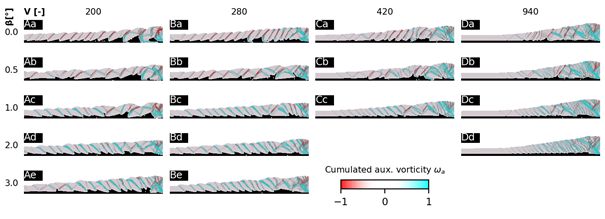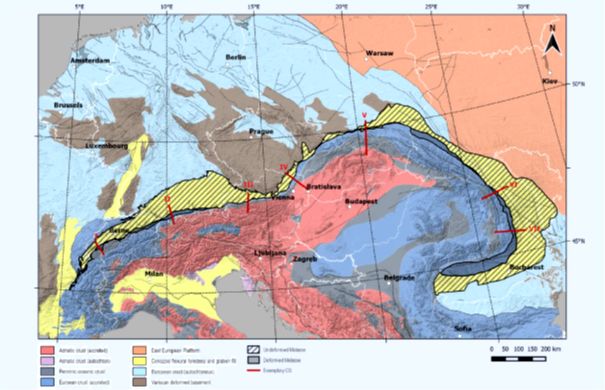TRIANGLE – Constraining Geometric Uncertainty of Triangle Structures with Mechanical
PI: Christoph v.Hagke
Why do backthrusts at the leading edge of deformation form? Even though they are ubiquitous features, we do only have a poor understanding of their mechanics.
We use a combination of analog and numerical models in combination with fieldwork to learn more about the mechanics of triangle zones.
The project is in collaboration with Alexander Malz, Landesamt für Geologie und Bergwesen (Sachsen-Anhalt)
Analog models are performed in collaboration with Prof. Susanne Buiter, RWTH Aachen University ( https://susannebuiter.eu/index.html)
Numerical models are performed in collaboration with Dr. Arthur Bauville, Jamstec ( https://www.jamstec.go.jp/mat/j/members/abauville/index_e.html)

Fig. 1: Numerical parameter study showing low detachment strength is needed to obtain backthrusts at the leading edge of deformation

Fig. 2: Analog model of a triangle zone (credit: Jan Wagner, RWTH Aachen University)

Fig. 3: Triangle zones in the Alpine Carpathian Belt – based on compilation of 160 cross-sections, we determine where triangle zones are present, in order to infer the underlying drivers. This part of the project is in collaboration with Piotr Krzywiec, Krakow Universiy, Poland, and Dan Tamas, Babeş-Bolyai University, Romania
Project related publications:
von Hagke, C., Malz, A. (2018) Triangle zones – Geometry, kinematics, mechanics, and the need for appreciation of uncertainties, Earth Science Reviews 177, pp. 24-42
Chudalla, N., Bauville, A., von Hagke, C. (in prep.) Influence of decollement strength and dip on fault vergence in fold-thrust belts
Ferl, H., Malz, A., Krzywiec, P., Tamas, D. von Hagke, C. (in prep.) Foreland mechanical stratigraphy and lower plate flexural rigidity controls along-strike segmentation of the Alpine-Carpathian fold-thrust belt




